
HOME > ALL DISPLAYS > 1890-1915 > INSTRUMENT TABLE
Wall Bracket Instrument Table
1890-1915 | Object #:A0337.0008
An adjustable bracket allowed instant repositioning of the instrument table as the dentist moved around the chair. Numerous drawers held the most commonly used tools within easy reach. The tops were often covered with leather or felt.
SCROLL TO LEARN MORE

Taggart’s first cast inlay machine used compressed air. Shortly after, he and others were looking for improvements to the casting process. It was not long before centrifugal force became the standard among most dentists.
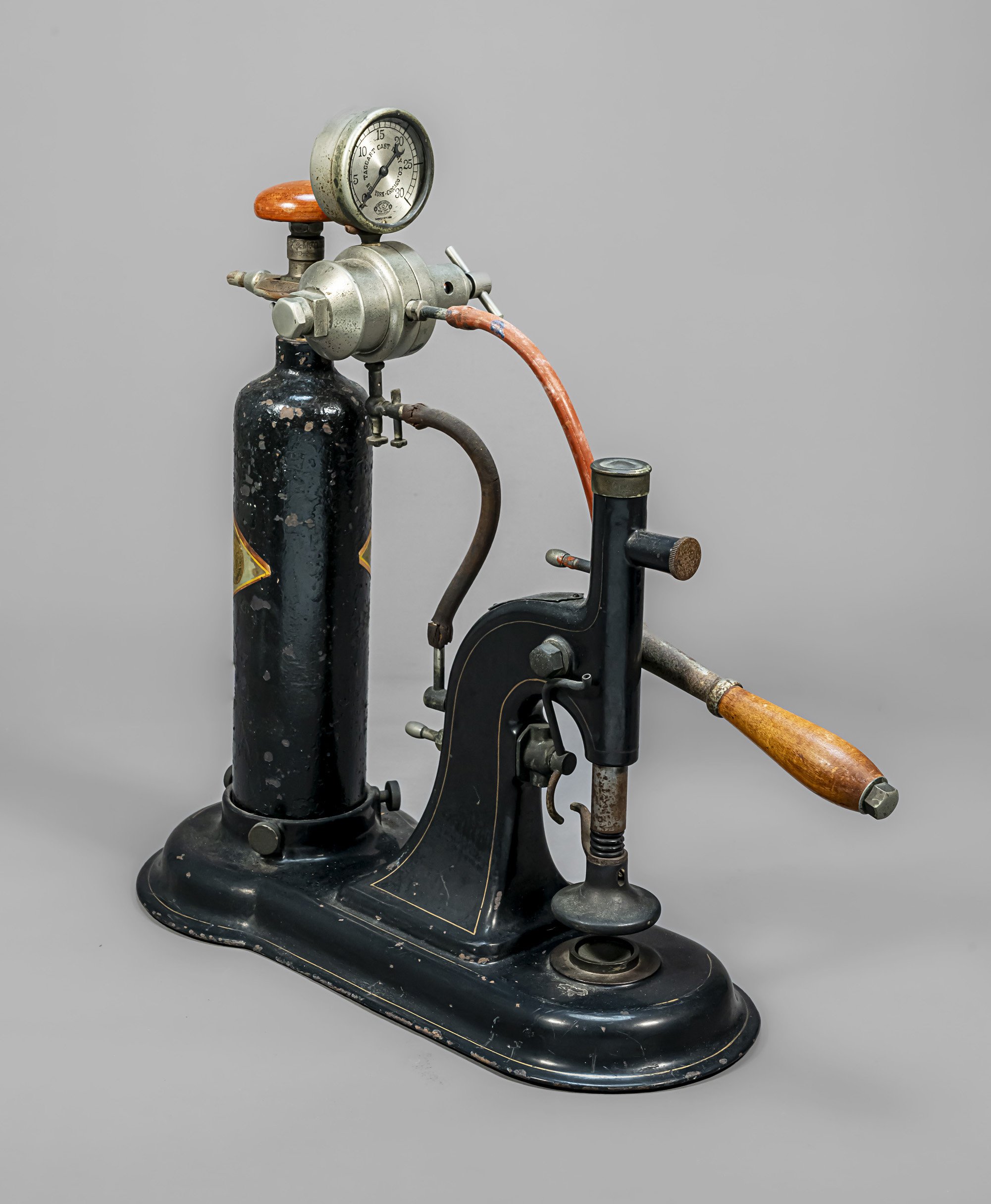
1/9: Taggart’s mold was placed on the base platform. A gas flame supplied by the lower tube melted the metal in the casting ring at the base of the vertical plunger.
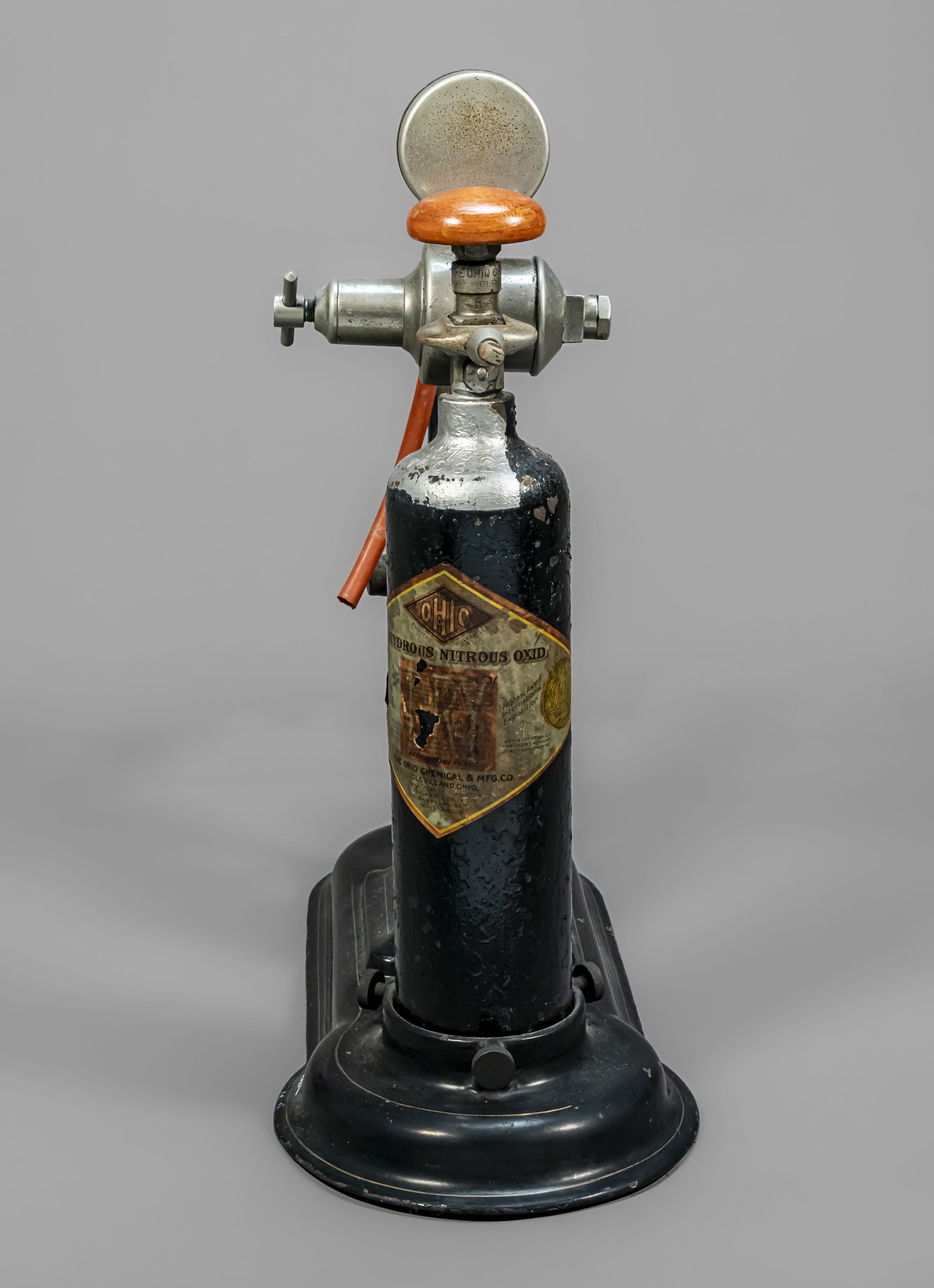
2/9: In Taggart’s version, a controllable nitrous oxide blowpipe unleashed the compressed gas instantly forcing the metal into the mold.
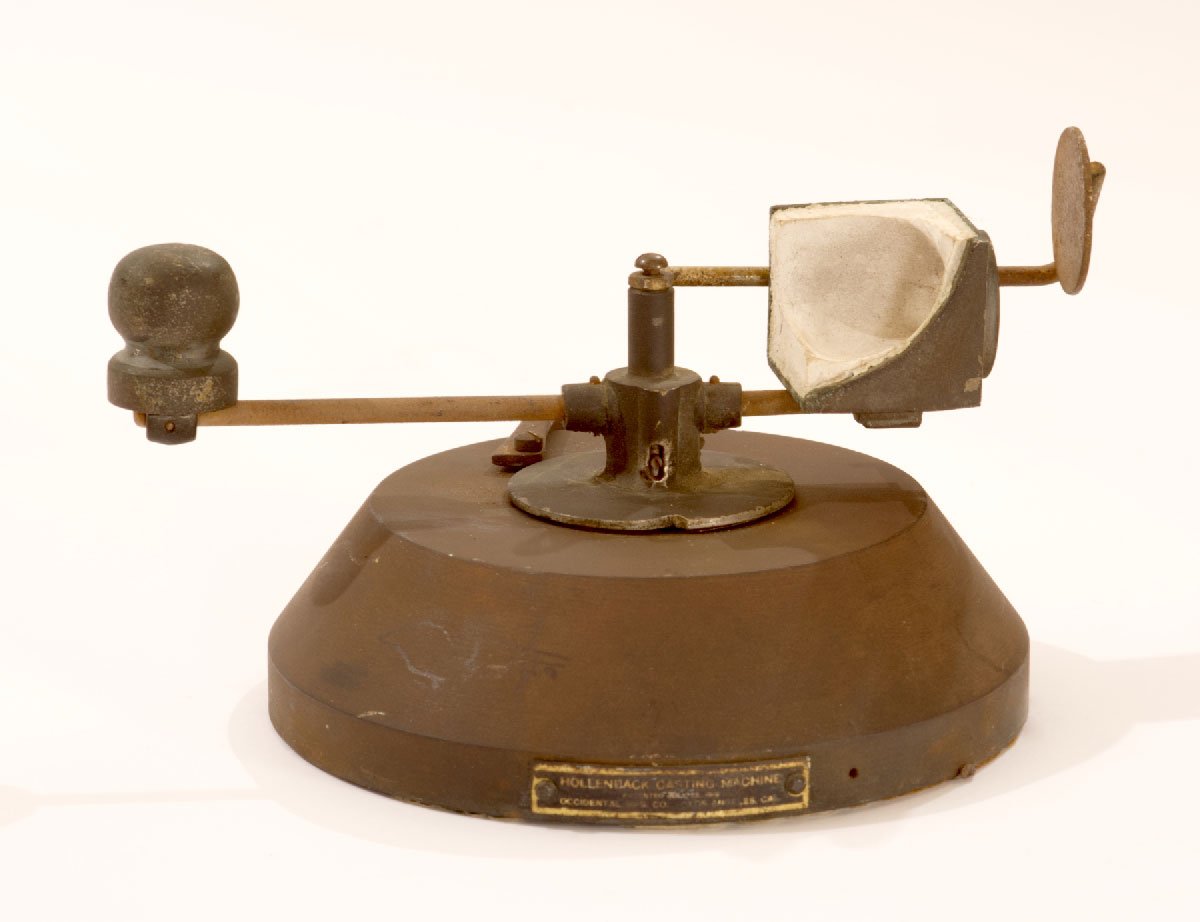
3/9: The Hollenback Centrifugal Casting Machine, patented in 1919 by Occidental Dental Manufacturing, created the pressure needed to fill the mold through rotation.

4/9: The ring of Taggart’s model was lowered onto the mold with the wooden handle and compressed gas from the upper tube instantly forced the liquid metal into the mold.

5/9: Figures showing how the wax mold is placed within the “investing” material which retains its shape so that liquid gold can be forced into the void.

6/9: Figures 1 and 2 show a wax mold that has been made of the missing area of the tooth. Figures 3 and 4 show the placement of a “sprue,” the spot in which the liquid gold will enter and fill the void left by the melted away wax.
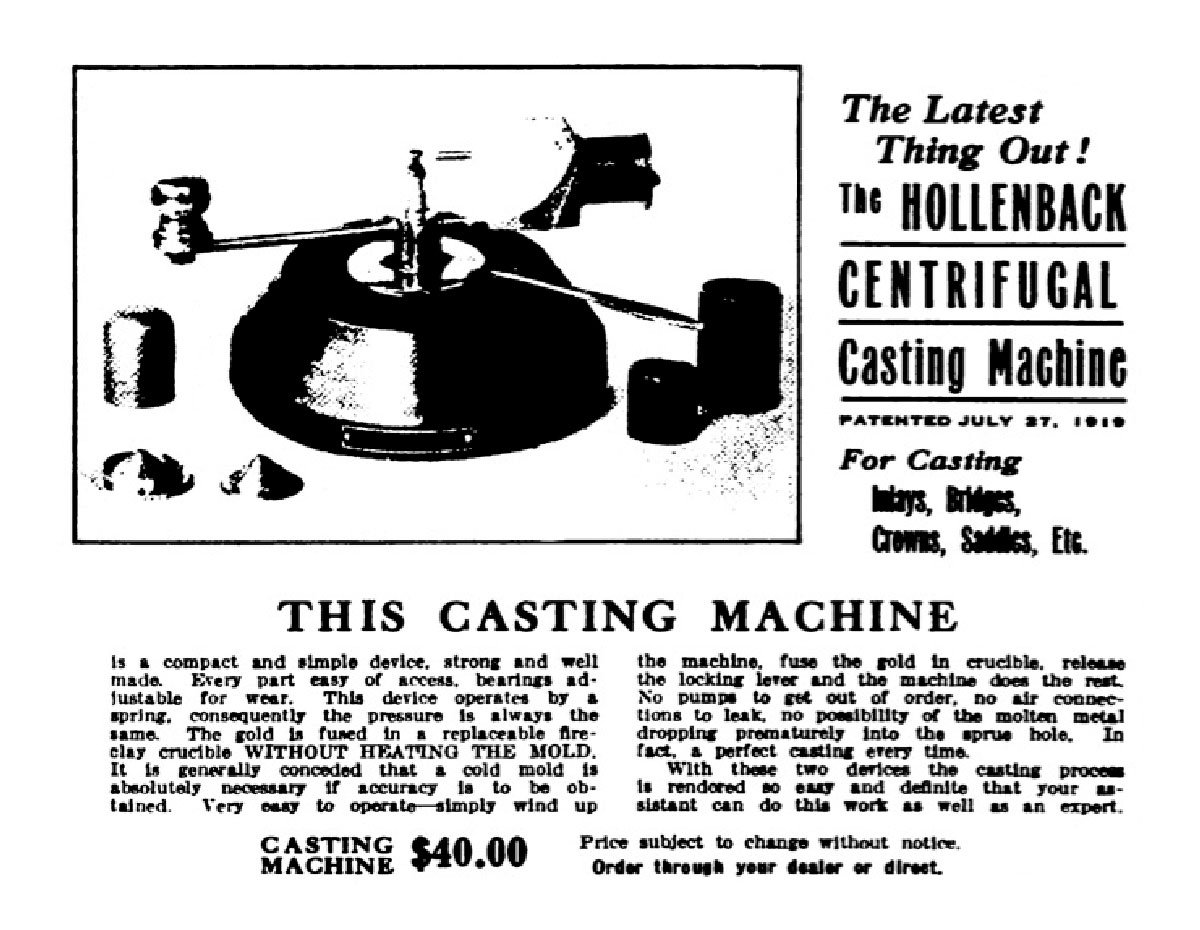
7/9: A 1920 advertisement for the Hollenback Centrifugal Casting Machine.

8/9: An advertisement for cohesive gold foil from the late 1800s. Before the use of casting, gold foil would have been meticulously tapped into cavities – a tedious process that could take days.

9/9: Gold inlays made from modern casting methods.
Taggart not only patented his inlay machine, but also the inlay process. He asked that dentists pay him a fee for its use and began bringing suit against some prominent members of the dental profession. A lawsuit in 1918 brought about the nullification of Taggart’s patent on the process of casting inlays. He became a controversial figure and it was over 30 years before his legacy would be celebrated.

1/4: This advertisement reflects Taggart’s desire to own the rights to the casting process and not just the equipment he sold.

2/4: Dr. M. D. K. Bremner, originally a defendant in a lawsuit, wrote about Taggart’s contributions, “Legally, Taggart had no right to a patent monopoly. But it was he who taught the profession to cast inlays, which was without a doubt the greatest single contribution to dental progress that has been made by any individual.”
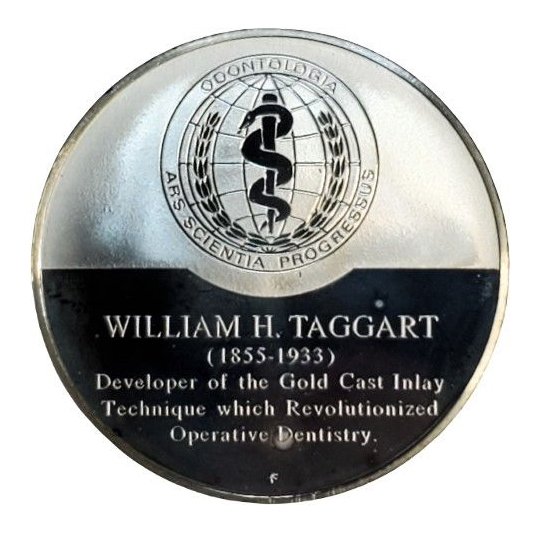
3/4: In 1971, the Franklin Mint included them in its Collection of Medallic History of Dentistry.

4/4: In 1971, the Franklin Mint included them in its Collection of Medallic History of Dentistry.



